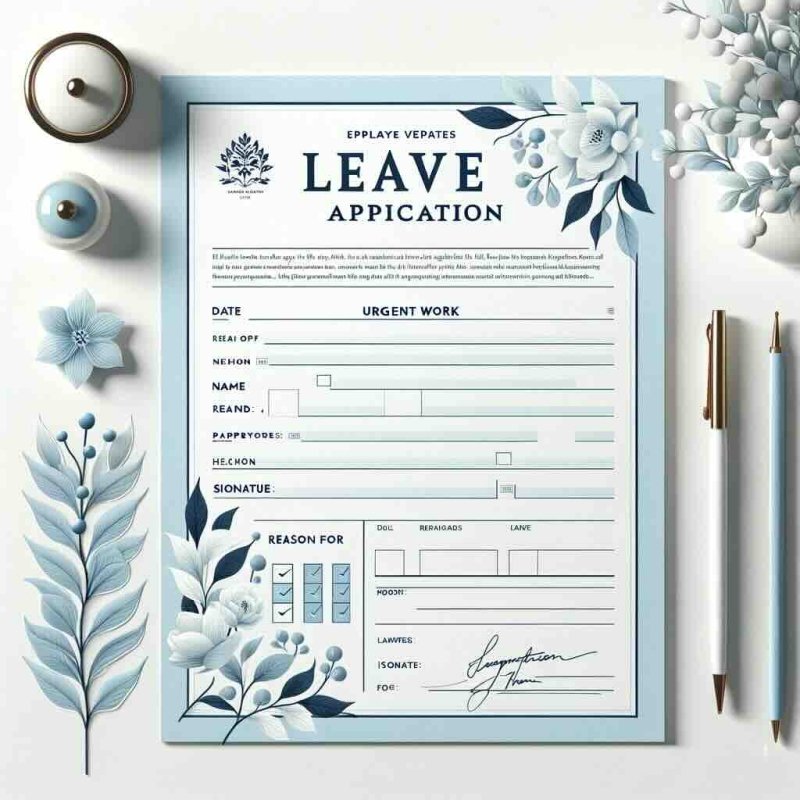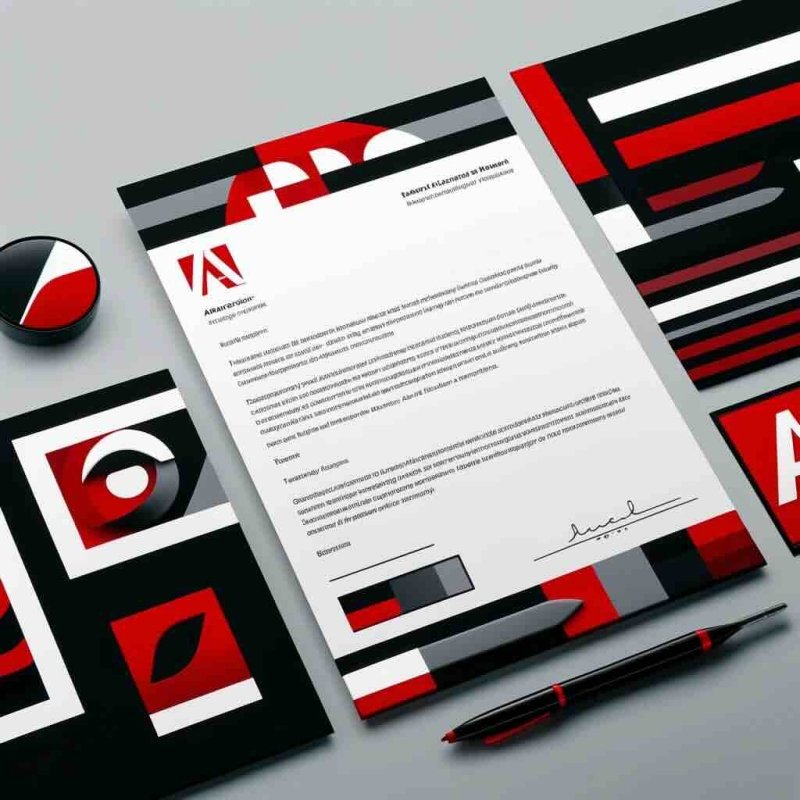100+ Sample Leave Applications for office or school
Master Leave Applications: Get Approved!
Discover the art of crafting a perfect leave application, including types, essential components, and tips for approving your request.
Taking a break from work or school is sometimes necessary, whether for health reasons, personal matters, or the need for a well-deserved vacation. However, requesting time off can be daunting if you're unsure of the proper procedure or how to phrase your request.
This blog will give you links for over 100+ samples of everything you need to know about leave applications and different use cases, ensuring your next request is approved.
List of Leave application formats
- Leave application for office
- Leave application for school
- Leave application for sick leave
- Leave application for marriage
- leave application for personal reasons
- Maternity leave application
- Leave application for sister marriage
- Casual leave application
- Leave application for 2 days
- Leave application for urgent work
- Application for sick leave to school
- One day leave application
- Half day leave application
- Leave application for fever
- Privilege leave
- Leave letter to school due to stomach pain
- Application for examination leave
- Leave application for out of station
- Samples for application for leave in Hindi
- Leave letter in hindi for fever
- Hostel leave application
- How to write leave letter
- Leave application for 3 days leave
- Leave application for brother marriage
- Leave application by teacher to principal
Tips for a Successful Leave Application
Crafting a leave application is an art form, blending the finesse of a diplomat with the strategy of a chess master. Here’s how to ensure your leave application not only sees the light of day but also gets that golden stamp of approval:
1. Timing is Everything: Launch your leave application with the precision of an Olympic gymnast sticking the landing. Not too early that it's forgotten, and not too late that it causes chaos. Aim for the sweet spot when your boss is in a good mood and not swamped.
2. Clarity is King: Be as clear as a Caribbean sea. Specify the type of leave, exact dates, and the reason. Remember, a confused mind says no. Eliminate guesswork to make it easier for them to say yes.
3. The Art of the Subject Line: In emails, your subject line is your knight in shining armour. Make it informative yet concise. “Leave Application - [Your Name] - [Dates]” does the trick. It's like the headline of a newspaper - make it grab attention.
4. Plan for Your Absence: Show that you’re not just thinking about your time off but also about the team. Outline how your responsibilities will be covered in your absence. It’s like saying, “I got your back,” even when you’re chilling on a beach somewhere.
5. Keep it Professional: Even if you plan to spend your leave in pyjamas watching soap operas, your application should still read like it’s been drafted by the CEO. Your professional tone will reassure your employer of your commitment.
6. The Polite Touch: Courtesy goes a long way. A simple “Thank you for considering my request” can be the cherry on your leave application sundae. It’s like saying please before asking someone to pass the salt.
7. Proofread Like a Pro: Typos and grammatical errors are the equivalent of showing up to a job interview in flip-flops. Proofread your application to ensure it’s as polished as a royal guard’s boots.
8. Attachments if Necessary: If your leave requires documentation (think medical leave), attach the necessary files. It’s like bringing receipts to a budget meeting - proof is powerful.
9. Follow Up Gracefully: A gentle nudge can do wonders if you don’t hear back. It’s not nagging; it’s professionally reminding. Think of it as following up on a dinner invitation without sounding desperate.
10. Embrace Transparency: Honesty is your best policy. If you plan a two-week trek in the Himalayas, don’t say you have a wisdom tooth removed. Truth builds trust, and trust is currency in the professional world.
Navigating the leave application process with these tips can transform a daunting task into a smooth sail. It’s about being respectful, prepared, and clear - the trifecta for getting that well-deserved break.
Should you send an email or written leave application?
Ah, the age-old debate of the digital versus the tangible, pitting emails against written leave applications in a gladiatorial arena of workplace protocol. Let’s dissect this with the precision of a scientist and the flair of a humorist, shall we?

Email Leave Applications
Pros:
- Speedy Gonzales: Email is faster than an office gossip. Hit 'send', and your request is lounging in your manager's inbox, sipping a virtual piña colada.
- Trackability for Days: With email, you've got a digital paper trail longer than a Monday morning. Perfect for reminding your boss that you did apply for leave amid their 200 unread emails.
- Edit Undo: Did you make a mistake? No problem. A few clicks and your email is polished to perfection, unlike a written application, which would now sport a lovely patch of white-out.
- Attachment Overload: Need to attach a doctor’s note or a wedding invitation? Easy peasy. Try doing that with a written note without turning it into a scrapbook project.
- Convenience King: Draft it in your PJs at midnight or during your commute. The world is your office with email.
Cons:
- The Black Hole Syndrome: Emails can vanish into the void of the spam folder or get buried under a digital avalanche of newsletters and Nigerian prince scams.
- Formality Faux Pas: The casual nature of emails can tempt you into being a tad too informal. Emoji overuse, anyone? 😬
- The Impersonal Touch: An email doesn't quite capture the earnestness of a handwritten note. It's like comparing a virtual hug to the real deal.
- Tech Glitches: Have you ever had an email not sent but thought it did? Yeah. Silence isn’t always golden.
- Overlooked Overtures: In the rapid-fire realm of email communication, your leave request might be just one more task on a busy day, easily overlooked or forgotten.
Written Leave Applications
Pros:
- The Personal Touch: A written application is like a handwritten love note in the age of Tinder. It stands out for its personal touch in a digitized world.
- Serious Business: The effort to pen a letter signals you're serious about your request. It's the workplace equivalent of wearing a suit to a job interview.
- No Tech, No Problem: Your leave application won’t fall prey to cybersecurity hiccups or email outages. It's immune to the whims of the digital gods.
- Signature Swagger: A physical signature adds a layer of authenticity and formality that an electronic signature can’t match.
- A Tangible Reminder: A physical document is more complex to ignore or forget when physically present on a desk, serving as a constant (and slightly guilt-inducing) reminder.
Cons:
- Snail-Mail Pace: In the time it takes for your written request to reach your boss’s desk, an email could have circled the globe twice.
- The Paper Trail Pileup: Unlike emails, written requests add to the physical clutter. They’re like the junk drawer of documentation.
- Accessibility Issues: Once it leaves your hand, it's out of your control and into the realm of “Did they see it, or did it become a coffee coaster?”
- Resource Hog: Let’s not forget the trees sacrificed for your leave application. Mother Nature is not amused.
- Correction Connection: Did you make a mistake? Prepare to start from scratch or showcase your mastery of correction fluid. Neither option screams ‘efficiency’.
So, choose your weapon wisely in the quest for that much-needed leave, whether tapping keys or wielding a pen. Each has its battlefield where it shines and falters, but the end goal remains a triumphant march out of the office, approved leave in hand.
Summing up
By following the tips and best practices outlined in this blog article, you can write a professional leave application that will get your employer's or school's approval.
Leave application Questions? Answers.
To write a leave application, you should include the following information: the reason for the leave, the dates of the leave, how you will keep in touch (if applicable), and a plan for catching up on any missed work.
You should submit your leave application as soon as you know that you need to take time off. This will allow your employer to plan accordingly and minimize disruption to the workplace.
This depends on your employer's policies and the specific reason for the leave.
In some cases, an unpaid leave of absence may be granted for personal or family reasons. However, it is best to discuss this with your employer to determine what is possible.
Yes, most employers are required to provide maternity and paternity leave to eligible employees. The specific terms of the leave, including the duration and whether it is paid or unpaid, may vary depending on the employer and the individual's situation.
Yes, employees who are called to active military duty are entitled to take a leave of absence for military service. The specific terms of the leave, including the duration and whether it is paid or unpaid, may vary depending on the employer and the individual's situation.
To request a leave of absence, you should first check with your employer to see what their policies and procedures are for taking time off. In most cases, you will need to submit a written request for leave to your supervisor or HR department. Be sure to include the reason for your leave, the dates you plan to be out, and any other relevant information.
Yes, in most cases you can take a leave of absence for personal reasons. However, the specific reasons for which you are allowed to take time off will vary depending on your employer's policies and the laws in your state. For example, some employers may allow you to take time off for personal reasons such as to care for a sick family member, while others may only permit leaves for medical reasons.
Whether your benefits will continue while you are on leave will depend on the specific policies of your employer and the laws in your state. In some cases, your employer may continue to provide benefits such as health insurance and paid time off during your leave, while in other cases, you may need to pay for these benefits yourself or they may be suspended during your leave.
Whether you will have to pay taxes on your leave pay will depend on the specific type of leave you are taking and the laws in your country.
For example, if you are taking a leave under the Family and Medical Leave Act (FMLA) in the US, the pay you receive during your leave may be tax-free.
However, if you are taking a personal leave of absence without pay, you will not receive any pay and therefore will not have to pay taxes on it.












Leave a comment